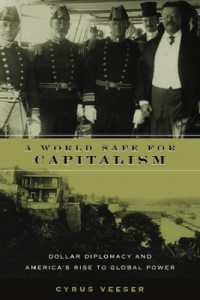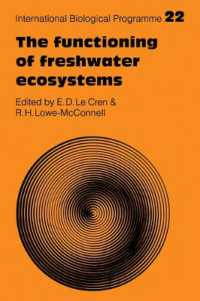- ホーム
- > 洋書
- > 英文書
- > Literary Criticism
Full Description
Editors NoteIt's quite amazing to think, at least for me, but it does still happen, from time to time. For example, I was thinking that this issue of AZALEA seemed quite different from the very first, nine years ago. It is somewhat smaller in size, for one thing; about two-thirds the number of pages. It features only one Korean writer born before 1950, the poet Kim Kirim. Volume One had six. And of those who translated the poems and stories, eight of the current issue's team are professional translators or otherwise engaged, while three are what used to be called academics, graduate students, or teaching faculty in Korean literature. This trio notably includes Professor Emeritus Kevin O'Rourke, who has defined the field in so many directions and dimensions, including his own poems. But in Issue Number One, twenty of the translators were either graduate students or teaching in the field of Korean literature, while four were in other fields. One might be tempted to conclude that the field of Korean literature has expanded far beyond the academic studies of a decade ago. We know it as a vital part of the international literary scene, an indirect but strong indication being the breadth of interests that now draw translators, publishers, and readers to it. Readers will find the poems and stories in the current issue reflecting that engagement. Not documents or testaments, they take compelling shape in the English-language translations, commentary, and discussions, reminding us that they too are a part of the contemporary Korean literary scene, as vast and vital as any, the realm to which AZALEA has, over the years, sought to be a bridge.But still, a voice somewhere reminds me, there is the example of Kim Kirim, whose voice and vision come clear in Jack Jung's gifted translations. Kim Kirim is one of the historical authors, more frequent in our pages a decade ago. Born in 1907, he disappeared into the North during the Korean War, 1950-53, and we are left with no trace, no record of his life or his death.Jack Jung notes that Kim Kirim criticized T. S. Eliot for not being quite there yet in The Waste Land. But with the translation, and the images of the original book Weather Map as designed by the poet and architect, short story master flaneur Yi Sang, 1910-1937, we readers have an opportunity to catch up to where Korean literature and design arts were, some eight decades ago, and in the other literary works and remarkable images in our current issue, where they are now. Welcome, then. Do come in. David R. McCannApril, 2016








